Introduction
Microservices architecture has revolutionized the e-commerce industry, offering unparalleled flexibility and scalability. By breaking down applications into smaller, independent services, businesses can develop, deploy, and scale each service individually, resulting in a more robust and agile e-commerce platform. The benefits of adopting microservices are evident in success stories like Dunelm Group plc, the UK's leading homewares retailer, which has seen tremendous growth and revenue by embracing this architectural approach.
Similarly, TBC Bank's commitment to improving customer experience and accelerating digital product time-to-market showcases the strategic value of microservices in reducing complexity and managing technical debt. The transition of Netflix from a monolithic to a microservices architecture further illustrates the practical benefits and challenges associated with this transformative shift. Furthermore, real-world applications such as the checkout-free store in Dublin Airport powered by Zippin technology demonstrate the potential of microservices to revolutionize consumer experiences.
To fully leverage the advantages of microservices, businesses must have a deep understanding of their domain and carefully consider their goals. The architectural decision between monolithic and microservices structures is significant, with each having its merits depending on specific needs. As the e-commerce landscape continues to evolve, microservices architecture stands as a strategic imperative for businesses aiming to stay competitive and meet the demands of the digital marketplace.
Benefits of Microservices Architecture in E-commerce
Microservices architecture has ushered in a transformative era for e-commerce businesses, enabling them to operate with unprecedented flexibility and scalability. The architecture consists of small, independent, and loosely coupled services, each capable of executing unique functionalities. This modular approach allows for individual services to be developed, deployed, and scaled autonomously, promoting a more robust and agile e-commerce platform.
Reflecting on the experience of Dunelm Group plc, the UK's leading homewares retailer, we can see the tangible benefits of adopting microservices. With a digital platform that attracts over 400 million sessions annually and accounts for approximately 35% of their revenue, Dunelm showcases the importance of a responsive and adaptable online presence. Microservices facilitate this by enabling rapid scaling that echoes the company's growth, while maintaining the stability and performance of their e-commerce operations.
Similarly, TBC Bank's commitment to improving customer experience and accelerating digital product time-to-market exemplifies the strategic value of microservices in reducing organizational complexity. This architectural shift plays a pivotal role in facilitating TBC Bank's international expansion and digital transformation goals, while managing technical debt and inter-team dependencies.
The case of Netflix's transition from a monolithic to a microservices architecture further illustrates the practical benefits and challenges associated with such a move. As Netflix evolved, the need for a more scalable and fault-tolerant system became evident, leading to the adoption of microservices and API-driven communication.
In the news, innovative retail systems like the checkout-free store in Dublin Airport, powered by Zippin technology, highlight the real-world applications of microservices. The store's seamless integration of cameras and weight-sensored shelving demonstrates the architecture's potential to revolutionize consumer experiences.
To truly leverage microservices, understanding the business domain is crucial. This knowledge allows for the decomposition of applications into distinct microservices, resulting in a distributed architecture where services are deployed independently across multiple targets, enhancing overall system resilience and flexibility.
The architectural decision between monolithic and microservices structures is a significant one, with both having their merits depending on an application's specific needs. While microservices offer scalability and independence, monolithic architectures can provide simplicity in deployment. As the debate continues, businesses must carefully consider their goals and the intricacies of their domain to make an informed choice.
Outstanding Scalability
In the dynamic world of e-commerce, where customer demand can fluctuate dramatically, scalability becomes a non-negotiable feature of any digital platform. The microservices architecture is akin to working with LEGO bricks, allowing for the construction of complex systems from smaller, modular components. Each 'brick' or service operates independently, which means individual elements can be scaled in response to specific needs without risking the stability of the entire structure.
Consider the case of Dunelm Group plc, the UK's leading homewares retailer. Their digital platform must cope with over 400 million sessions yearly, contributing to around 35% of their revenue. The adoption of a microservices architecture on the backend reflects their commitment to an infrastructure that can grow alongside their expansion, ensuring that the frontend, which drives significant revenue, remains responsive and resilient.
Similarly, PayPal, during its initial growth phase, faced the challenge of scaling to meet an unprecedented surge in user transactions—reaching a staggering 1 million transactions a day. In response, they expanded their infrastructure with over 1000 virtual machines, a move that underscores the importance of anticipating and facilitating growth in user demand.
Furthermore, TBC Bank, with a vision to facilitate everyday banking, recognized the need to simplify operations and reduce technical debt. Their agile transformation, focusing on microservices, enabled them to scale effectively while maintaining a commitment to improving customer experiences.
These narratives illustrate that a scalable system is not just about handling increases in demand; it is about maintaining functionality and user experience at all levels of traffic. As posited by industry experts, a scalable system should not exhibit any perceptible decrease in performance, regardless of the number of concurrent users. This philosophy is especially pertinent in cloud computing, where a cloud is defined by the services it offers, and these services must be capable of adjusting capacity to meet changing demands—essentially, a platform that is scalable 'all the way down.'
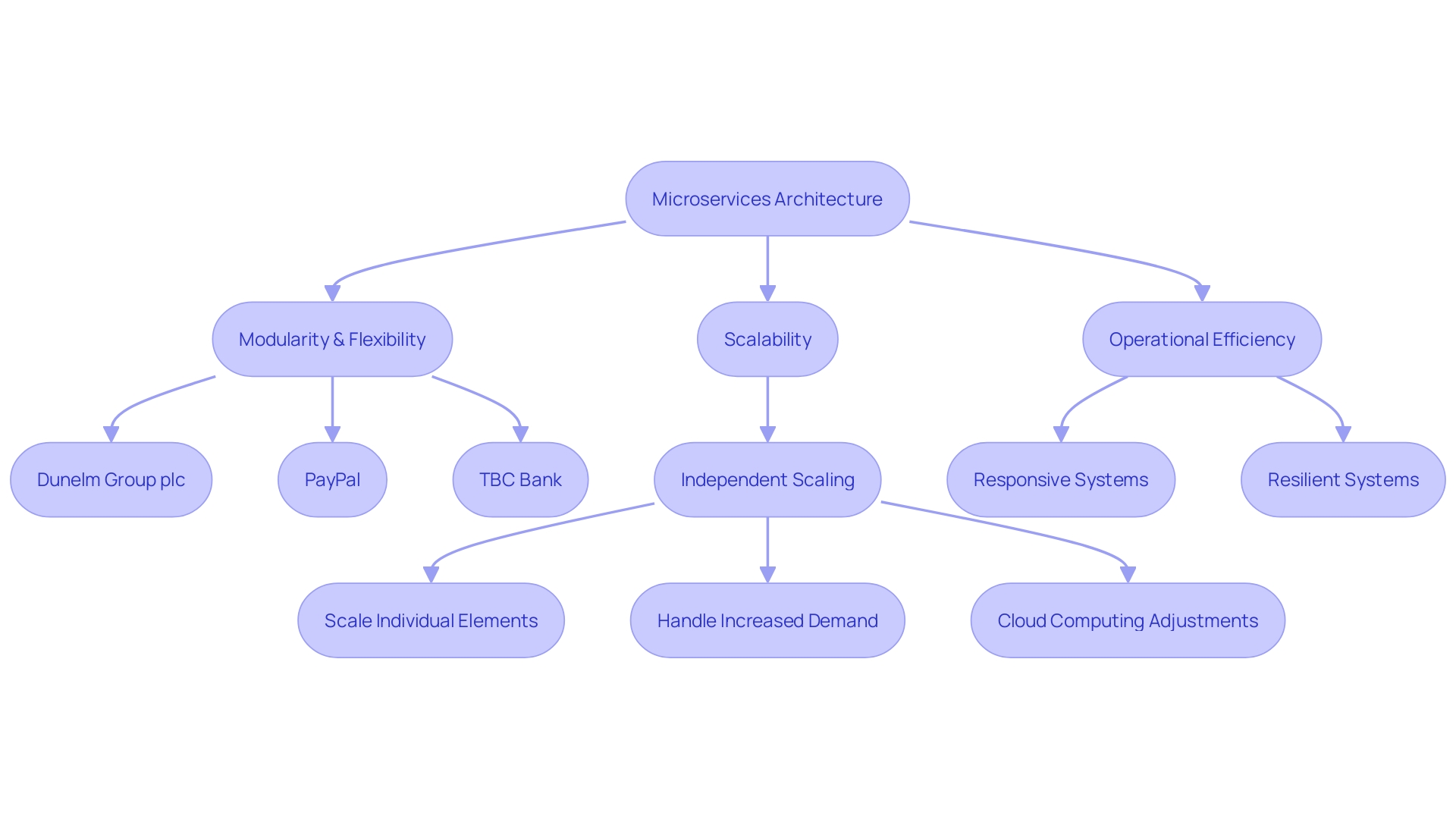
Improved Fault Isolation
In the intricate ecosystem of e-commerce, the resilience of an online platform is paramount. Microservices architecture, which operates on the principle of decentralized service management, plays a pivotal role in ensuring this resilience. It does so by enabling fault isolation—a mechanism that confines failures to the originating service without letting them cascade through the entire system. This design philosophy not only simplifies the process of identifying and rectifying issues but also fortifies the system against widespread disruptions.
Considering the case of Dunelm Group plc, a leading UK homewares retailer, their digital platform's ability to handle over 400 million sessions annually and contribute to 35% of the company's revenue can be attributed to an architectural shift towards microservices. This shift reflects a strategic response to scaling demands, mirroring the need for a robust, fault-tolerant system that safeguards revenue streams derived from online channels.
Moreover, a study of the Netflix transition from monolithic to microservices architecture reveals the tangible benefits of such an approach. Netflix's journey underscores how resilience and fault tolerance are not merely theoretical concepts but critical business enablers. The distributed systems' ability to withstand component failures and continue uninterrupted operations is a testament to the architectural choices made.
As Leslie Lamport aptly puts it, "A distributed system is one in which the failure of a computer you didn't even know existed can render your own computer unusable." This statement encapsulates the essence of fault tolerance in distributed systems, where the robustness of the network is paramount. In light of this, the e-commerce sector increasingly recognizes the necessity of architectures that can assure continuous performance despite unforeseen failures.
In the current landscape, where technical disruptions can have far-reaching implications, the resilience offered by microservices architecture is not just a technical advantage but a strategic imperative for e-commerce operations.
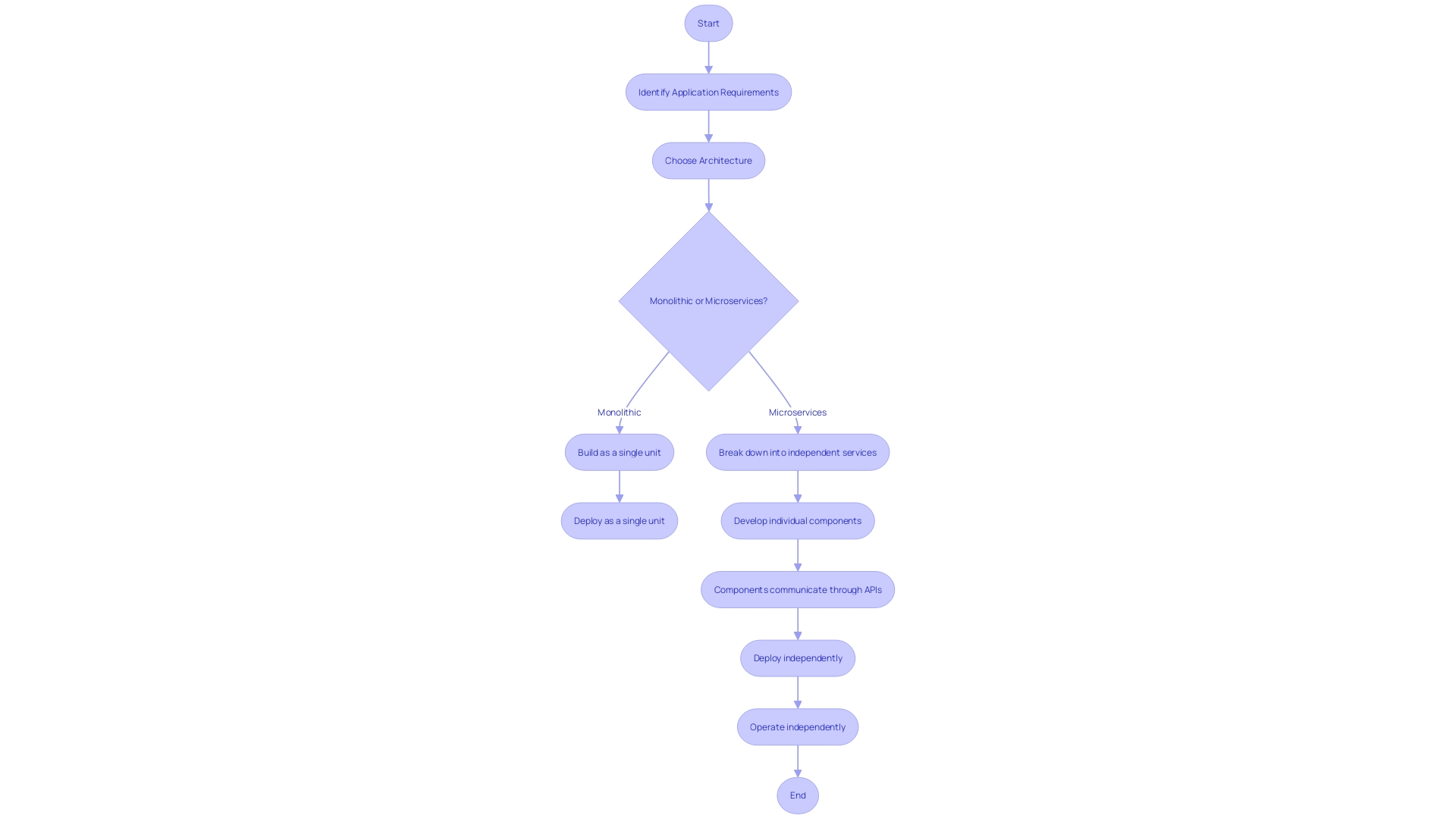
Flexibility in Technology Stack
E-commerce enterprises are continuously evolving and require a technology framework that provides the ability to adapt quickly to market trends and consumer behavior. Microservices architecture is a beacon of flexibility in this landscape, allowing for the utilization of disparate technologies catered to the needs of individual services. Each service in a microservices architecture operates autonomously, with the capability to leverage the most appropriate tools and frameworks to enhance specific functions within the e-commerce platform. Such a modular approach not only fosters innovation but also ensures that e-commerce systems remain at the forefront of technological progress.
For instance, the UK's leading homewares retailer, Dunelm Group plc, which garners substantial revenue from its digital platform, faced the need to scale its operations to reflect its growth. By transitioning to a microservices-based backend architecture, Dunelm effectively supported the expansion of its high-traffic online store. Similarly, Netflix's Java Platform, spearheaded by Java champion Paul, underscores the vitality of microservices in supporting robust and scalable applications in high-demand environments.
This shift away from the once-dominant monolithic architecture—which is akin to adding a new tower to an already large castle—is driven by the need for scalability without the burden of scaling the entire system. Microservices offer a solution where each independent service can be scaled as needed, resulting in more efficient use of resources.
The transition to a microservices architecture is not just about technological improvement; it aligns with the more extensive movement towards agile and responsive retail operations, as seen in the recent deal between S Group and Price for electronic shelf labels. Retailers are now adopting strategies that provide real-time inventory visibility and seamless omnichannel experiences to meet customer expectations.
In summary, the adoption of microservices architecture in e-commerce is a strategic move to address the challenges of scalability and to maintain technological relevance. It enables businesses to isolate and upgrade individual components without disrupting the entire platform, ensuring that each service is using the optimal technology stack to deliver exceptional performance and customer satisfaction.
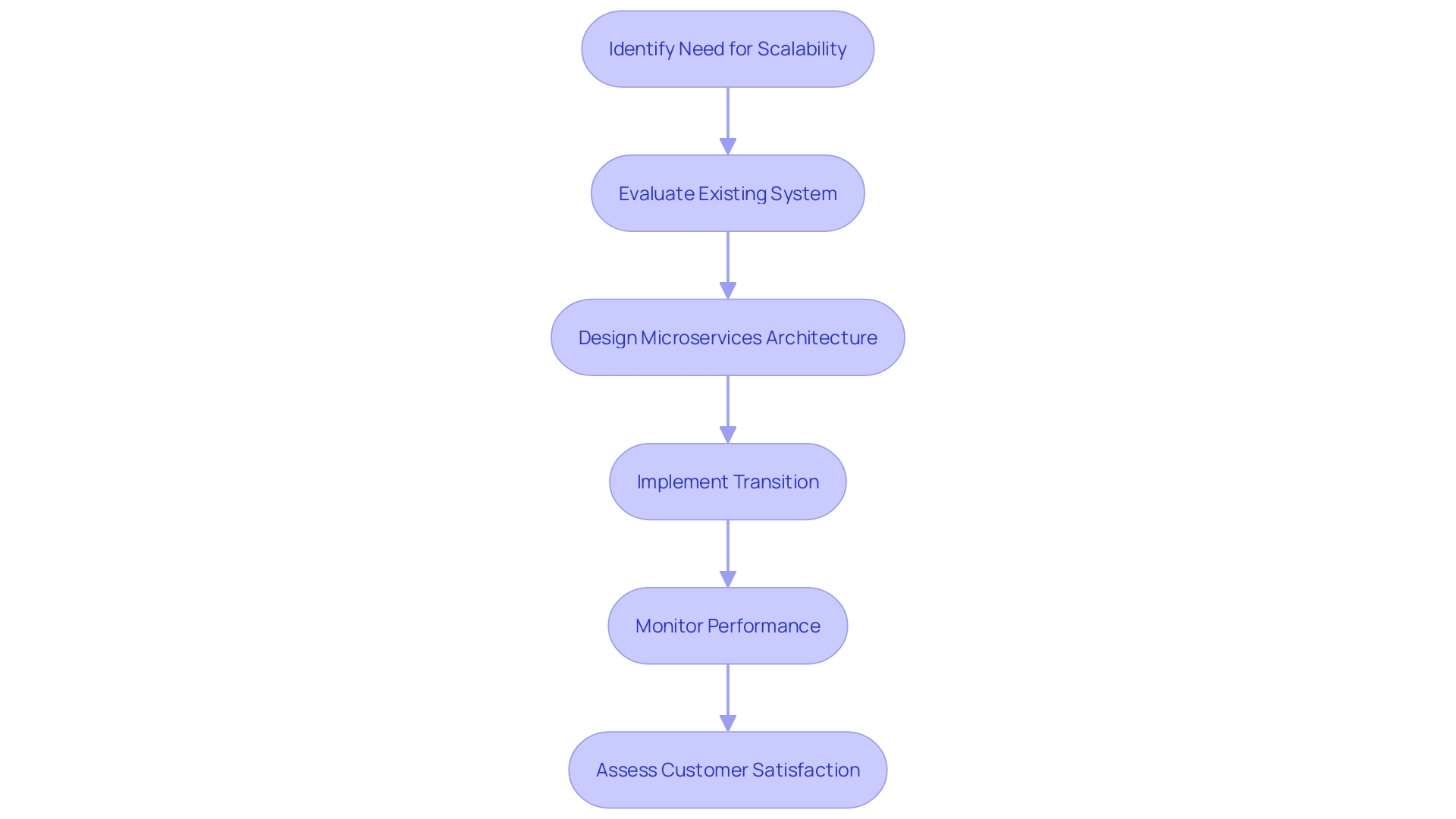
Easy Update and Maintenance
E-commerce platforms continually evolve, and keeping them current is no small feat. A microservices architecture offers a robust solution, breaking down complex tasks into manageable segments. Take, for instance, the process of integrating an effective search and filtering system. By utilizing a microservices approach, product data can be denormalized, with each aspect managed separately and then unified within a centralized Catalog database. This ensures that any updates, like a new inventory quantity, are seamlessly reflected across services, facilitating real-time product availability for search and filtering.
Leading retailers like Dunelm Group plc harness the power of microservices to support their digital platforms efficiently, crucial for a business where 35% of revenue is generated online. As companies grow, adopting a distributed system like microservices for the backend becomes imperative, especially when high revenue is at stake. This architecture not only streamlines updates and maintenance but also accelerates the deployment process. Consequently, new features and bug fixes reach customers swiftly, enhancing the overall shopping experience.
In the dynamic landscape of e-commerce, where checkout-free stores emerge and innovations like Zippin technology shape shopping experiences, staying agile and responsive is essential. Microservices architecture allows businesses to adapt quickly to these changes without the disruption associated with traditional monolithic structures. As we continue exploring the latest e-commerce trends and technologies, it's clear that microservices offer a scalable, flexible solution for modern online retail challenges.

Cost-Effective Infrastructure
A robust infrastructure is essential for e-commerce businesses aiming to scale and adapt to the digital marketplace. Constructing such an infrastructure involves integrating advanced technology, solid servers, firewalls, and encryption to safeguard operations. In the past, e-commerce leaders had to constantly optimize databases and upgrade hardware and software, a process that was both time-consuming and costly. However, with the advent of cloud hosting services like AWS, creating a scalable and robust infrastructure has become more accessible and efficient.
By employing serverless architecture for essential functions such as order processing, inventory management, and customer engagement, e-commerce platforms can ensure these critical services are managed more efficiently. Serverless architecture enables individual services to run without the need for managing servers, significantly reducing infrastructure costs and improving resource utilization. For example, a serverless system can automatically scale computing resources, providing the flexibility necessary for handling varying loads without manual intervention.
Industry trends indicate a shift towards microservices architecture, which represents a departure from traditional monolithic architectures. Microservices architecture breaks down applications into smaller, independent components that communicate via APIs, akin to assembling a structure with LEGO bricks. This approach offers several advantages, including the ability to update and scale parts of an application independently, thus enhancing agility and performance. Companies like Dunelm Group plc, which relies heavily on their e-commerce presence, recognize the importance of such an architecture as they scale to meet customer demand.
Recent news in the retail sector also reflects this transformation, with businesses like S Group signing long-term agreements to modernize their operations with technologies that promote efficiency and scalability. As e-commerce continues to evolve, leveraging microservices and serverless architectures will be pivotal in building resilient, adaptable, and cost-effective platforms that can withstand the demands of a rapidly changing digital landscape.

Enhanced Security Efficiency
In the realm of e-commerce, security is a pivotal concern, particularly when considering the handling of sensitive customer information and financial transactions. Microservices architecture provides a powerful solution, enhancing security by isolating services and affording the implementation of security protocols at each individual service level. This strategic isolation of services is not merely about compartmentalization; it is a proactive approach to minimizing the repercussions of potential security infringements.
Take, for instance, M&T Bank, a venerable institution in the banking industry, which has recognized the imperative of adopting Clean Code standards across its development teams. This commitment is a testament to the necessity of high-quality, secure software in the face of the industry's accelerating digital transformation. Similarly, Dunelm Group plc, a leading UK homewares retailer, illustrates how scaling enterprises must adapt their organizational structure and software architecture, with microservices being a pivotal element for the backend to support their significant digital revenue.
Moreover, the advent of checkout-free stores, such as the Zippin technology-powered Dublin Town To Go store in Dublin Airport, showcases the innovative and security-conscious applications of such architecture in retail. These developments underline the urgency for e-commerce platforms to adopt robust infrastructure, embracing technologies like AWS cloud hosting and serverless architecture for core functions, which provide the scalability and security essential for modern businesses.
As industry experts have highlighted, security cannot be an afterthought; it must be woven into the very fabric of a company's ethos and operations. This necessitates a layered defense strategy—encompassing products, people, and processes—to fortify the organization against the ever-evolving threats posed by cybercriminals.
In essence, constructing a secure e-commerce platform is akin to building a fortress with multiple lines of defense, ensuring that even if one barrier is breached, others stand ready to thwart the intrusion. By integrating microservices architecture and adhering to stringent security standards, e-commerce businesses can achieve greater resilience, ushering in a new era of consumer confidence and business success.
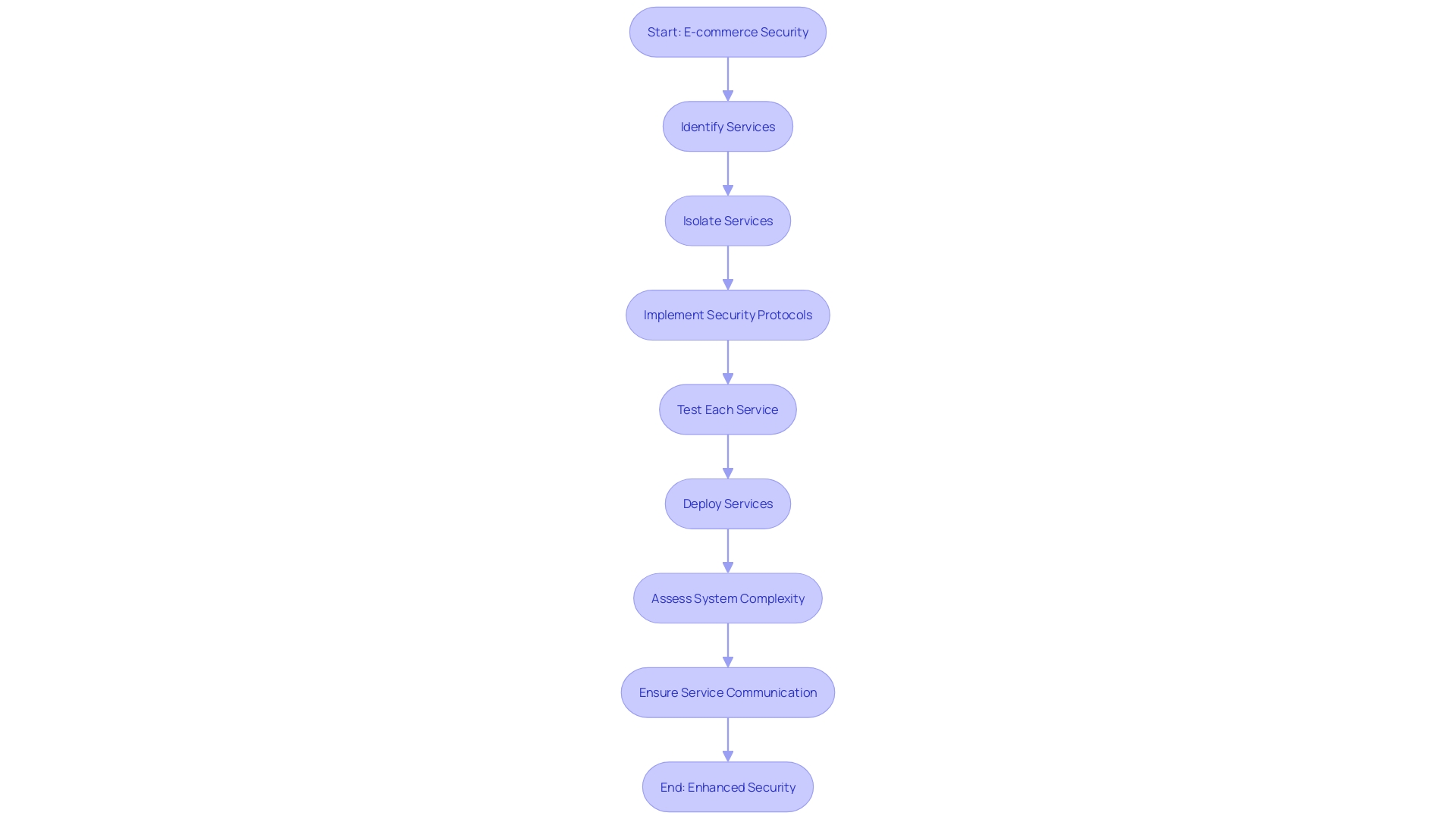
Faster Development and Deployment
In the dynamic realm of e-commerce, agility and the ability to rapidly adapt to market trends are invaluable. Microservices architecture is a pivotal enabler in this sector, offering a modular approach to application development. By partitioning applications into smaller, self-contained services, microservices facilitate independent and parallel development efforts. This modularity allows teams to iterate more swiftly, reducing development cycles, and accelerating the delivery of new features or updates to the market.
Consider the case of Dunelm Group plc, a leading UK homewares retailer, which sees a significant portion of its revenue generated through digital channels. The company's move to a microservices architecture on the back end reflects its growth and the need to scale its software architecture in tandem with its organizational structure. Similarly, at Netflix, Java Platform experts like Paul Champion the use of microservices to enhance Java application development, providing a testament to the architecture's effectiveness in high-demand environments.
Microservices are defined by their independence, allowing each service to be scaled and developed autonomously. An e-commerce platform might utilize a catalog service that integrates updated inventory data—facilitating real-time product availability searches and efficient filter implementations, as illustrated in discussions around Authorize.net's architecture.
Moreover, the microservices approach is backed by substantial industry adoption. Java, for instance, remains the dominant programming language for developing microservices, used by 34% of practitioners surveyed. This widespread preference underscores the architecture's robustness and the community's confidence in its capabilities.
E-commerce innovation continues to be propelled by startups and established companies alike, as evidenced by Avnet's Design Hub. This self-service online tool exemplifies how microservices can be leveraged to streamline engineering tasks, encompassing supply chain management and product procurement, consequently enhancing the e-commerce experience.
Ultimately, the decision to transition to microservices architecture is driven by the need to manage increasing code complexity and to provide a more personalized and efficient web experience. As e-commerce platforms evolve, microservices stand as a cornerstone for building resilient, flexible, and scalable systems that can meet the ever-changing demands of the online marketplace.
Integration with Third-Party Services
Microservices architecture is revolutionizing e-commerce by offering modularity, flexibility, and the ease of integrating with third-party services. For instance, Dunelm Group plc has leveraged this architecture to support their massive digital platform efficiently, which is vital as it generates a significant portion of their revenue. Similarly, Voucherify's use of API-first strategies has empowered them to expedite their delivery process and become an integral part of the technology stacks for major brands.
The digital twin technology, exemplified by Bosch's SOFC system, showcases the potential of microservices in monitoring and optimizing performance over a product's lifespan. This approach is particularly advantageous in the e-commerce sector, where the ability to adapt and integrate with various services such as payment gateways, shipping options, and marketing tools can elevate the user experience and operational efficiency of the platform.
Leveraging microservices and APIs is not solely about technological advancement; it's a strategic move that aligns with business objectives to foster agility and scalability. As Eleftheria, an experienced business analyst, points out, proficiency in digital marketing and computer software training is crucial in today's tech landscape. Embracing these technologies enables businesses to build more complex, robust, and user-friendly e-commerce solutions that can keep pace with the evolving digital marketplace.
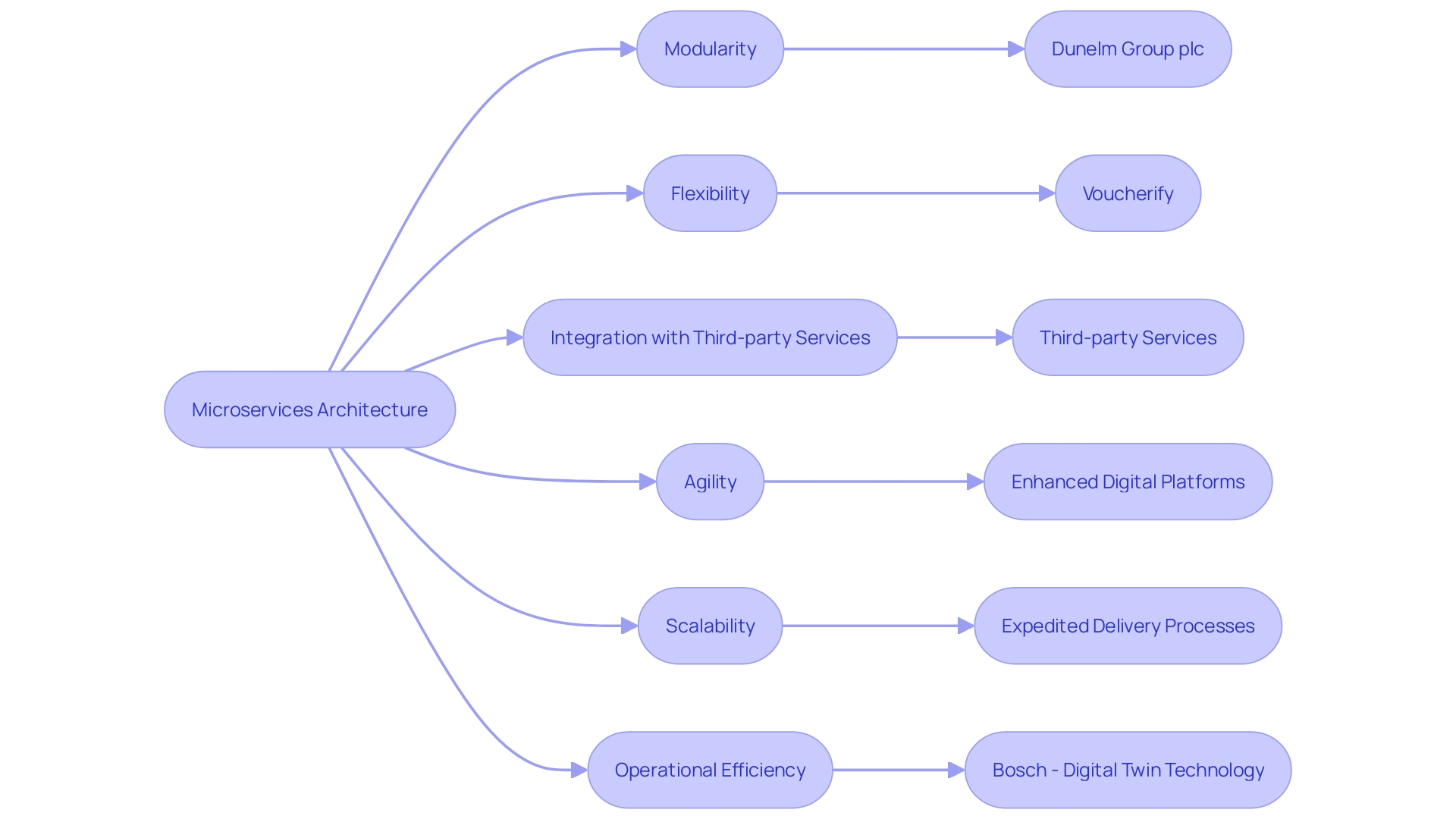
Testing and Issue Isolation
Microservices architecture has revolutionized the way e-commerce platforms are built and maintained, particularly when it comes to testing for quality and reliability. By breaking down complex applications into smaller, independent services, each microservice can be tested in isolation. This not only streamlines the testing process but also minimizes the risk of one service's issues affecting the larger system, leading to more stable releases and a robust platform.
Before delving into testing, it's essential to define clear objectives. Whether the goal is to reduce load times or to handle more concurrent users efficiently, setting these targets upfront can significantly influence the testing approach. Performance testing, for example, is vital for e-commerce sites to ensure smooth operation under various conditions. Proactive testing helps identify potential issues like slow page loads or transaction delays before they affect customers, particularly during high-traffic events such as sales or promotions.
Choosing the right tools is also critical for effective testing. Options like LoadRunner, JMeter, and WebLOAD offer a range of features to suit different technical needs and budgets. The chosen tool should provide a testing environment that mirrors the production setup as closely as possible, encompassing hardware, software, and network configurations. This resemblance ensures that any findings from the testing phase will be relevant and actionable in the live environment.
The case of Zalando, a leading online fashion platform in Europe, underscores the importance of thorough testing. The company's Site Reliability Engineering team, led by Heinrich Hartmann, is tasked with ensuring the IT infrastructure can withstand peak loads, such as those experienced during Cyber Week.
In the broader retail systems space, companies like S Group are leveraging technology to enhance their operations. S Group's five-year deal with Pricer for electronic shelf labels showcases the importance of adopting new solutions that can be managed and updated seamlessly, much like microservices in e-commerce.
The underlying principle of microservices is to understand the business domain thoroughly, which helps in dividing the application into manageable services that can be independently deployed. This distributed architecture enables each microservice to function and evolve without dependency on others, communicating through APIs to form a cohesive application.
In conclusion, microservices and thorough testing are not just about choosing a technology stack; they're about ensuring the quality and reliability of an e-commerce platform through meticulous planning, tool selection, and understanding of the domain. By isolating services and focusing on detailed testing, an e-commerce platform can achieve higher software quality, leading to a better user experience and increased business success.
Global Scalability and Localization
As e-commerce enterprises aspire to serve a growing global market, the adoption of microservices architecture has proven pivotal in scaling their operations and personalizing customer experiences. This approach involves decomposing an application into a suite of small, independent services, each with a specific function, enabling a more agile and flexible framework for growth.
Microservices allow for the deployment of services across various regions, each tailored to local preferences and regulations. For example, Dunelm Group's transition to microservices complemented its growth, as the architecture supported the high traffic on its digital platform, which accounts for a substantial portion of its revenue. Similarly, Nubank's embrace of a cloud-native microservices strategy underpinned its expansion to serve millions of customers worldwide, ensuring a consistent and reliable banking experience.
Moreover, the agile transformation of TBC Bank, which included adopting microservices, aimed to simplify operations and accelerate the delivery of digital banking products. The real-world implementations underscore the importance of microservices in international market penetration and service customization, reflecting a shift towards a more standardized and homogeneous technological stack.
Scalability is a cornerstone of microservices architecture, equipping systems to expand capacity in response to fluctuating demand. A scalable system maintains functionality regardless of user traffic, much like how a well-assembled LEGO structure withstands different weights without collapsing. This adaptability is essential for e-commerce platforms experiencing variable workloads and consumer patterns.
The strategic importance of microservices is further validated by projections of e-commerce growth, with global revenues expected to surge by 64.69% to $6.34 trillion by 2027. Such growth accentuates the need for architectures that can scale seamlessly across different markets and consumer bases, as evidenced by the significant contributions of regions like Europe and the United States to e-commerce revenues.
In summary, microservices architecture is not just a technical choice but a strategic enabler for e-commerce businesses seeking global reach and personalized customer engagement.
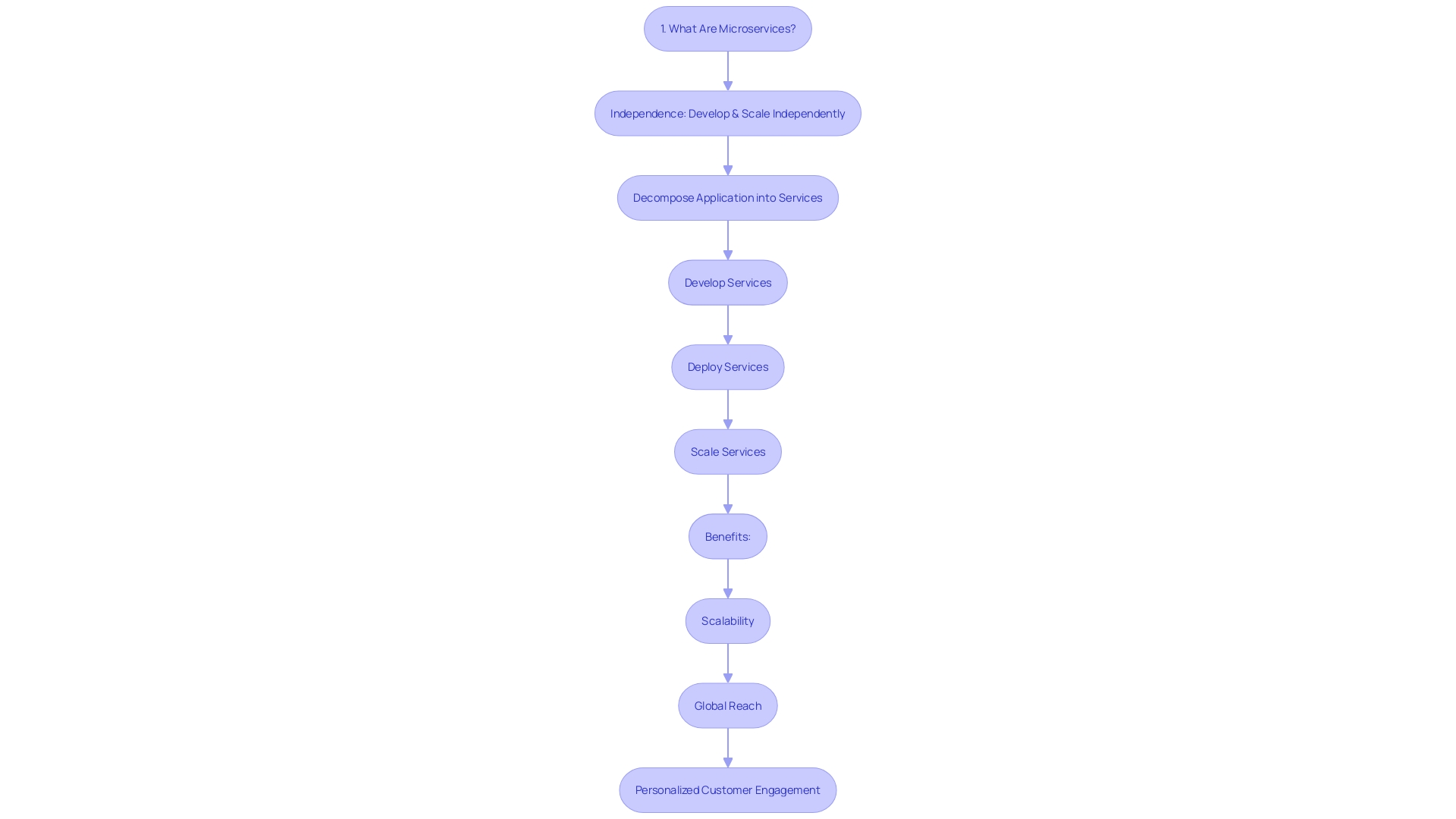
Implementing Microservices Architecture in E-commerce
Microservices architecture in e-commerce has emerged as a robust solution to handle the ever-increasing complexity and consumer demands of modern online retail. To effectively leverage this architecture, it's critical to understand that e-commerce platforms are akin to libraries that need efficient organization as they scale. Microservices allow an application to evolve from a monolithic library into a series of specialized sections, each housing different categories of products and services, facilitating easier management and updates without disrupting the entire system.
The Dunelm Group plc, the UK's leading homewares retailer, serves as an excellent case study. With over 400 million website sessions annually and a significant portion of revenue generated digitally, Dunelm reflects the critical importance of ensuring that a digital platform can scale alongside the company. By adopting a microservices architecture, they can maintain high-performance levels for their frontend layer, crucial for businesses with substantial online revenue streams.
When considering the transition to microservices, it's vital to appreciate the simplicity and flexibility it brings to individual services, allowing for rapid deployment and the freedom to select the most appropriate technology for each service. However, this architecture introduces its own set of challenges. The overall system complexity increases, and service-to-service communication requires careful design to avoid complications.
Amidst a landscape where e-commerce revenue in Europe and the United States is projected to reach $730.3 billion and $917.6 billion respectively in 2023, and global e-commerce revenue expected to surge by 64.69% to $6.34 trillion by 2027, the stakes for implementing a scalable, robust architecture have never been higher. Companies like Amazon, with a Global Gross Merchandise Value (GMV) of $692.8 billion, demonstrate the success that can be achieved through effective e-commerce strategies.
To maintain competitiveness and provide a frictionless shopping experience, e-commerce platforms must prioritize website discoverability and personalized recommendations. Strategies such as featuring holiday products prominently or creating tailored 'recommended for you' sections can significantly enhance customer engagement and loyalty.
Implementing a microservices architecture in e-commerce is not merely a technical decision; it is a strategic move that can redefine how a business operates and engages with its customers. By considering the unique challenges and opportunities it presents, companies can create a resilient and adaptable digital presence that is well-equipped to thrive in the dynamic world of online retail.
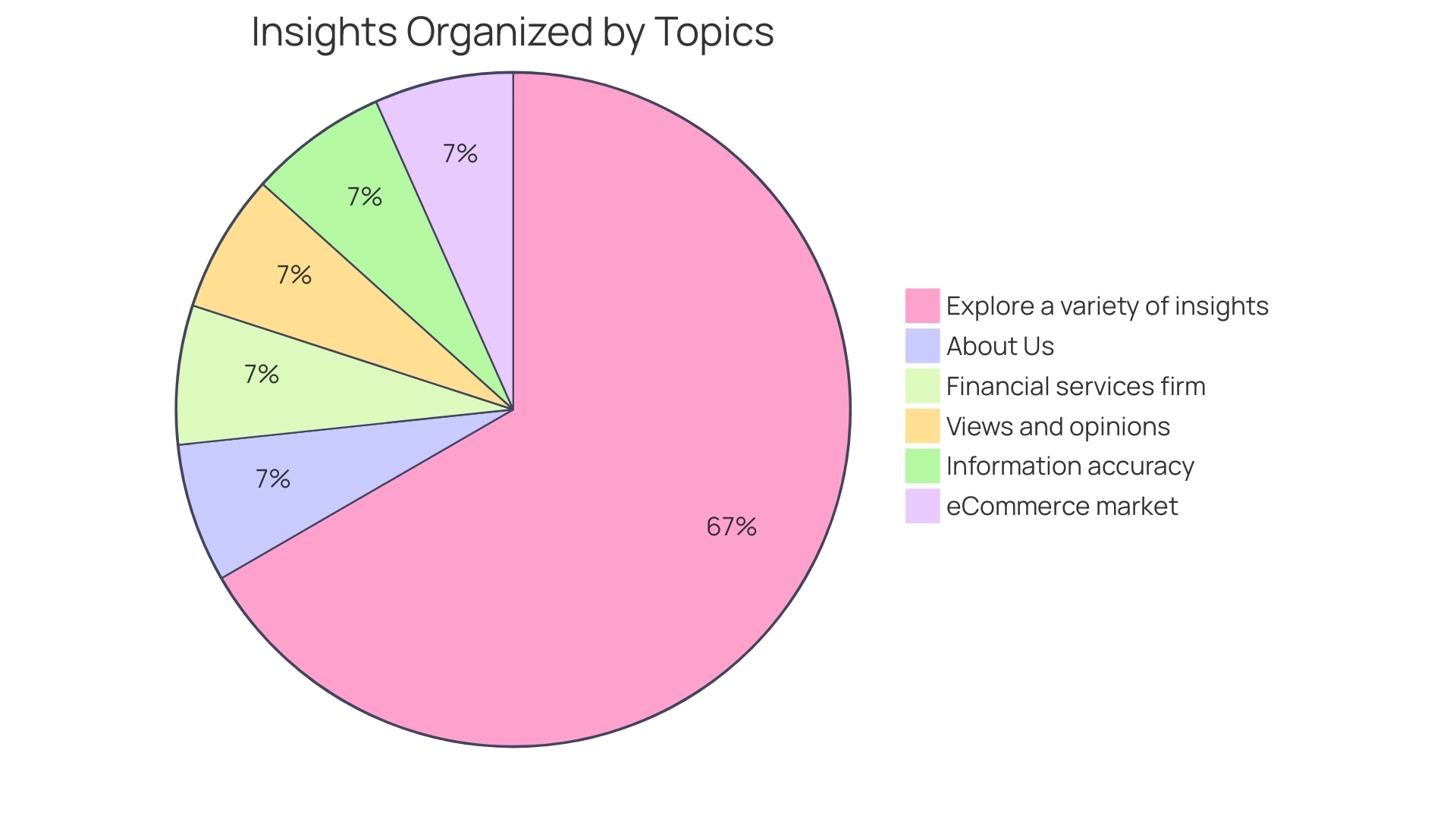
Challenges and Considerations
While microservices architecture offers a multitude of benefits such as greater scalability, flexibility, and the ability to deploy services independently, it's not without its challenges. Let's delve into common hurdles encountered when implementing this architecture within the e-commerce sector, and examine strategies to navigate these challenges effectively.
Microservices require a shift from traditional monolithic architecture, where an application is developed as a single, unified unit, to a design that breaks down the application into smaller, independent components. Although this transition can streamline development in the long run, it often presents initial scalability concerns and potential development bottlenecks.
For instance, Dunelm Group plc, a leading UK homewares retailer, faced the need to evolve their software architecture in response to scaling demands. By transitioning to microservices for their backend systems, they successfully supported the growth of their high-revenue generating digital platform.
Similarly, TotalEnergies Digital Factory, a subsidiary of TotalEnergies, leveraged microservices to modernize their legacy information systems. This approach was pivotal in developing tailored digital solutions to meet the operational needs across diverse branches worldwide.
The rise of e-commerce, especially during peak seasons, emphasizes the need for resilient and adaptable architectures. With a significant 57% of shoppers planning to do most of their holiday shopping online—an 8% increase from the previous year—e-commerce platforms must be prepared to handle this surge without compromising performance.
Microservices can play a key role in achieving this by allowing components of a platform to be scaled independently to meet demand. However, it's crucial to recognize that scalability is not inherent to microservices and only becomes a benefit when systems are subjected to significant load.
To better grasp the intricacies of microservices, one can consider coding examples that illustrate how these independent services operate and communicate through APIs, akin to LEGO bricks coming together to form a complex structure.
By understanding these challenges and learning from real-world case studies, e-commerce businesses can better equip themselves to implement microservices successfully, ensuring that their platforms can adapt and thrive in a rapidly evolving digital landscape.

Best Practices for Microservices Implementation
Adopting microservices architecture in e-commerce involves more than just a technical shift; it's a strategic move that can determine the scalability and agility of a business. Microservices, by definition, are small, autonomous services that work together to form a complete application. Each service is self-contained and responsible for a specific business function, enabling development teams to deploy and scale services independently.
The advantages of microservices are exemplified by the Dunelm Group plc, a leading UK homewares retailer. With their digital platform experiencing high traffic and contributing substantially to their revenue, Dunelm recognized the need to transition from a monolithic to a microservices-based architecture to support their growth. This move not only facilitated backend scalability but also provided a pathway to modernize the front end to better serve their high-revenue generating online customers.
Similarly, TotalEnergies' Digital Factory, a subsidiary focused on accelerating digital transformation, leverages microservices to create tailored digital solutions. Their commitment to utilizing APIs has been instrumental in modernizing legacy systems, demonstrating how microservices can drive business agility and innovation.
When considering best practices for implementing microservices, it's crucial to understand the importance of independence. Each microservice is designed to operate autonomously, allowing for continuous development and deployment without affecting the entire application. This independence is critical for e-commerce platforms that must adapt quickly to changing market demands and customer behaviors.
To illustrate the concept, imagine managing a growing library. Initially, a monolithic structure with everything in one room may suffice. But as the library expands, it becomes a maze, and updating a single book could disrupt the entire system. Microservices offer a solution akin to dividing the library into several rooms, each dedicated to a specific genre, simplifying management and updates.
In the retail sector, innovations like checkout-free stores, exemplified by the new Dublin Town To Go store at Dublin Airport, highlight the need for e-commerce platforms to incorporate microservices to handle real-time transactions and provide seamless customer experiences. This store utilizes a combination of cameras and weight-sensored shelving, all managed by microservices, to offer a hassle-free shopping experience for travelers.
As we look ahead, it's clear that microservices will continue to play a pivotal role in shaping e-commerce architecture. By embracing microservices, businesses can ensure that their platforms are scalable, resilient, and capable of meeting the ever-evolving demands of the digital marketplace.
Conclusion
Microservices architecture has revolutionized e-commerce by offering flexibility, scalability, and numerous benefits. By breaking down applications into smaller, independent services, businesses can develop, deploy, and scale each service individually, resulting in a robust and agile platform.
The benefits of microservices architecture are evident in success stories like Dunelm Group plc and TBC Bank, which have experienced significant growth and revenue. The transition of Netflix from a monolithic to a microservices architecture further illustrates the practical benefits and challenges associated with this shift. Real-world applications, like the checkout-free store in Dublin Airport powered by Zippin technology, demonstrate the potential of microservices to revolutionize consumer experiences.
Microservices architecture provides outstanding scalability, fault isolation, flexibility in technology stack, easy update and maintenance, cost-effective infrastructure, enhanced security efficiency, faster development and deployment, integration with third-party services, testing and issue isolation, and global scalability and localization. These advantages enable businesses to adapt quickly, provide personalized experiences, and stay competitive in the dynamic e-commerce landscape.
To fully leverage the advantages of microservices, businesses must have a deep understanding of their domain and carefully consider their goals. The decision between monolithic and microservices structures is significant, with each having its merits depending on specific needs. However, microservices architecture stands as a strategic imperative for businesses aiming to meet the demands of the digital marketplace.
In conclusion, microservices architecture is a game-changer for e-commerce, offering flexibility, scalability, and a wide range of benefits. By embracing microservices and implementing best practices, businesses can build resilient, adaptable, and competitive platforms that meet the evolving demands of the digital marketplace.





